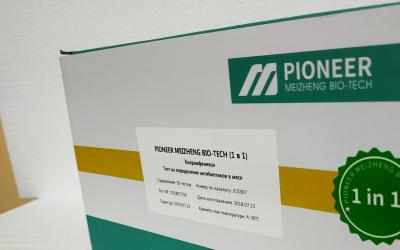Part of the great cycle. How Sibagro production works

Crop and animal husbandry have always gone hand in hand. Even at the dawn of agriculture, people realized that manure is an excellent fertilizer, and animal feed can be grown in the fields. Today, such cyclic animal husbandry, adjusted for modern technologies, is considered the most efficient and environmentally friendly. Using the example of Sibagro, we will analyze how closed cycles work in agriculture.
Own compound feed is the basis of food security
Western Siberia. Novosibirsk region. Here Sibagro, thanks to modern agricultural technologies, manages to get record harvests in the climatic zone, which has always been considered a zone of risky farming. In 2020, during a drought, when average yields in the region did not exceed 18.5 centners per hectare, JSC Kudryashovskoye, owned by Sibagro, near Novosibirsk gave an average yield of 32.9 centners per hectare, and on the experimental sites of the workshop in Krivodanovka - up to 80.
Such results became possible thanks to the use of a complex scheme of mineral nutrition by Sibagro agricultural technicians, the complete replacement of the system of protection against diseases, pests and weeds, as well as the use of modern world-class equipment.
“In Novosibirsk, we are constantly improving the technology, bringing it to automaticity and maximum efficiency. In general, we are now using a single intensive technology for cultivating crops at all enterprises,” said Sergey Mamonov, Deputy HEAD of the Crop Production Department at Sibagro.
"Sibagro" in the Novosibirsk region continues to increase farmland - this year the company acquired land in the Kochkovsky district, expanding the sown area from 75 to 90 thousand hectares.
Sibagro pays special attention to technical equipment. Another example of modernization is the Sibiryak plant-growing enterprise owned by the company in the Nazarovsky district of the Krasnoyarsk Territory. Here, Sibagro, having become the owner of the enterprise, in a short time acquired 31 new KamAZ and other equipment for Sibiryak, which made it possible to increase the sown area in Nazarovo from 40 to 70 thousand hectares.
“Our seeding complexes have a very high output - up to 140 hectares per day, and if the field is flat, each tractor can sow 160 hectares. This year, due to high-performance equipment, despite the fact that the area was significantly increased, we finished the sowing two weeks ahead of schedule,” said Sergey Stashkov, chief agronomist of Sibiryak.
On the fields of Sibagro, crops such as wheat, oats, rapeseed, soybeans, triticale, and peas are grown. The harvest is processed at Sibagro's own feed mills in Tomsk, Krasnoyarsk, Novosibirsk and the Urals.
Own feeds allow Sibagro to solve several important tasks at once. Firstly, the company is always confident in the quality of the feed, and therefore in the quality of the MEAT. Secondly, "Sibagro" does not depend on fluctuations in feed prices and can control the price of its products. And thirdly, own feed is food security: no matter what happens on the Russian and world markets, there will be no problems with compound feed.
How to raise the perfect pig?
Tomsk. Pig complex "Sibagro". The enterprise from which in 2000 the history of one of the largest pork producers in the country began. Here they work in a closed cycle - like at all Sibagro pig farms. The Tomsk enterprise produces almost 53 thousand tons of pork per year.
Each of the 200,000 piglets weighing 1 kilogram is fed here for 28 days with mother's MILK, and then transferred to rearing. At this time, he becomes independent and switches to food. The next stage is fattening, a period of intensive feeding, when the animal gains 750 grams of weight daily.
All processes at the Sibagro Tomsk pig farm are controlled using a modern animal care system. Electronics ensures that each piglet receives the right amount of feed and drinking water on time. The system also automatically removes waste.
In order for the process to go without overlays, and for the piglets to steadily gain weight, the breed of animals is important. The Sibagro pig farm in the Tyumen region is responsible for the quality of the breeding stock. Here, elite sows and producers of three breeds are raised at once: Landrace, Large White and Duroc.
If any of the Sibagro enterprises undergoes reconstruction and is temporarily left without a livestock, after the repair of the complex, new pigs are imported from here, from the Sibagro pig farm in the Tyumen region. So, after the Sibagro Chistogorsk pig farm underwent refurbishment and high-quality re-equipment in 2021, new breeding animals come here from Tyumen.
Thanks to the care for the quality of livestock and proper care, Sibagro pig farms produce pork of the highest quality, which is readily bought not only in RUSSIA, but also in other countries. For example, the East Siberian pig farm "Sibagro" in Buryatia not only almost completely covers the need for meat in the republic, but also exports pork and offal to Mongolia, where such a product as pig ears is in great demand. The products of the Kudryashovsky Meat Processing Plant are also known on the Mongolian market. Also, the Sibagro enterprise in the Novosibirsk region exports products to Kazakhstan.
By the way, pork and products from it are not the only thing that Sibagro produces in the Tomsk region. The Tomsk Poultry Farm is also located here, annually producing 39.1 thousand tons of chicken meat and 96 million eggs.
Meat that has not been touched
In addition to raising pigs and feed for them, Sibagro also produces high-quality semi-finished meat products and meat products.
Yekaterinburg. Ural. "Sibagro". Company-owned plant "Good taste". Here meat is processed and semi-finished products are produced, which are not touched by human hands.
This is important, because it is through the hands of employees that bacteria could get on the meat, significantly reducing the shelf life.
To avoid this, a unique boning conveyor was developed especially for the Sibagro division in Yekaterinburg. Deboning is the process of cutting a carcass. The conveyor has four belts: one carries empty boxes, the second carries meat ready for packaging, the third carries pieces that have yet to be cut, and the fourth carries full boxes that can be packed. Moreover, Sibagro in Yekaterinburg created the Deboners School, where in three months you can get a profession there: listen to lectures and practice at the workplace.
No less technical marvels and on the production line for burger patties. Here the machine itself forms a cutlet of the required thickness, radius and weight, feeds four pieces into the tray. Such portions of the machine can produce up to 120 per minute. Two people serve the line: one loads the minced meat, the second packs the trays with cutlets into boxes.
“We have modernized production in order to offer consumers those products that will cover their needs. In large cities, the main scarce resource for people is time. Our meatballs will help preserve it, because you can simply put them in a pan - and dinner is ready. And frozen products will be of interest to the food industry. This is a product cooked under ideal conditions, guaranteed to be safe and tasty,” says Roman Khairulin, DIRECTOR of the Ural Meat Processing Plant Sibagro.
What about waste?
Pig farms produce waste. No even the most advanced livestock breeding technology can avoid this yet. But Sibagro figured out how to turn this disadvantage to their advantage, while avoiding an unpleasant smell and not harming the environment. Sibagro collects waste and, having processed it, turns it into fertilizer. Thus, the manure collected in the pig farms of Yekaterinburg, Belgorod, Krasnoyarsk, Novosibirsk, Tomsk, Ulan-Ude and Tyumen is turned into fertilizer by Sibagro and returned to the fields. Plants, thanks to top dressing, give an excellent harvest and, having become mixed fodder, begin a new production cycle.
Read together with it:
- Парагвай: Экспорт субпродуктов является растущей отраслью и уже достиг 95,4 млн долларов СШАЭкспорт говяжьих субпродуктов в этом году значительно вырос. К концу августа выручка составила 95,4 млн долларов США по сравнению с 54,6 млн долларов США на тот же конец прошлого года. По данным SENACSA, в конце августа этого года было экспортировано 51 миллион килограммов мяса по сравнению с 33,7 миллиона килограммов на конец того же месяца прошлого года. Экспорт субпродуктов увеличился на 51,3%....
- Новые горизонты сотрудничества: Россия и Аргентина обсуждают совместный доступ на рынки продукции животного происхожденияОдной из ключевых тем конференции стал контроль за производством ветеринарных препаратов в Аргентине. Аргентинская сторона представила свою систему контроля, включающую Управление ветеринарных продуктов и Управление лабораторий животных. Эти организации обеспечивают высокие стандарты безопасности, так как каждая производственная единица подвергается проверкам каждые 3-5 лет и зарегистрирована в ин...
- Poultry farm "Tretyakovskaya" in 2 maanden geleden rublesAls u dit wilt weten, kunt u het beste weten be EXPORT development. Het kan zijn dat u tussen de 5 en 7 dagen tussen de 5 en 7 uur wilt wachten factories. Sinds 2017 zijn er meer kredieten , launching a slaughterhouse en feed mill. Met een gemiddelde van 70.3% in uw land, zijn er meer voordelen processing to Controleer het apparaat.......
- С января по июль экспорт свинины из ЕС вырос на 1,6%На втором месте оказались Нидерланды с объёмом экспорта в 392 000 тонн. Дания экспортировала свинину в третьи страны с объёмом в 308 000 тонн, что примерно на 13% меньше, чем в предыдущем году. Германия экспортировала 180 000 тонн, что на 18% меньше, чем годом ранее. Это было обусловлено, главным образом, дополнительными ограничениями на экспорт, вызванными вспышкой ящура в начале года. Помимо зап...
- Московская область планирует нарастить мясное производство на 25% к 2030 годуВ Московской области более 100 предприятий уже выпускают около 305,000 тонн мяса, из которых значительная доля поступает от 19 ведущих производителей свинины и мяса птицы. Также в регионе реализуются два новых инвестиционных проекта: в Можайске строится утиная ферма на 125,000 птиц, а в Ступино — овцеводческое хозяйство на 11......
- С начала года Московская область увеличила экспорт свинины на 35% в стоимостном выраженииМосковская область продолжает укреплять позиции одного из ведущих экспортеров продукции агропромышленного комплекса в России. По итогам 9 месяцев с начала года регион нарастил экспорт свинины на 35% по стоимости. В натуральном выражении объем поставок составил 85 тысяч тонн, что на 17% больше, чем за аналогичный период прошлого года. В Министерстве сельского хозяйства и продовольствия Московской о...
- Совместные проекты и обмен опытом. В каких направлениях Беларусь и Казахстан готовы развивать сотрудничество в АПК23 октября, Минск. Беларусь готова делиться с Казахстаном опытом в аграрной сфере и заинтересована в дальнейшем расширении партнерства. Об этом заявил первый заместитель премьер-министра Беларуси Николай Снопков на первом Белорусско-казахстанском аграрном форуме, который прошел в Астане, сообщает БЕЛТА со ссылкой на пресс-службу правительства. "Беларусь действительно обладает значительным опытом, ...




























































